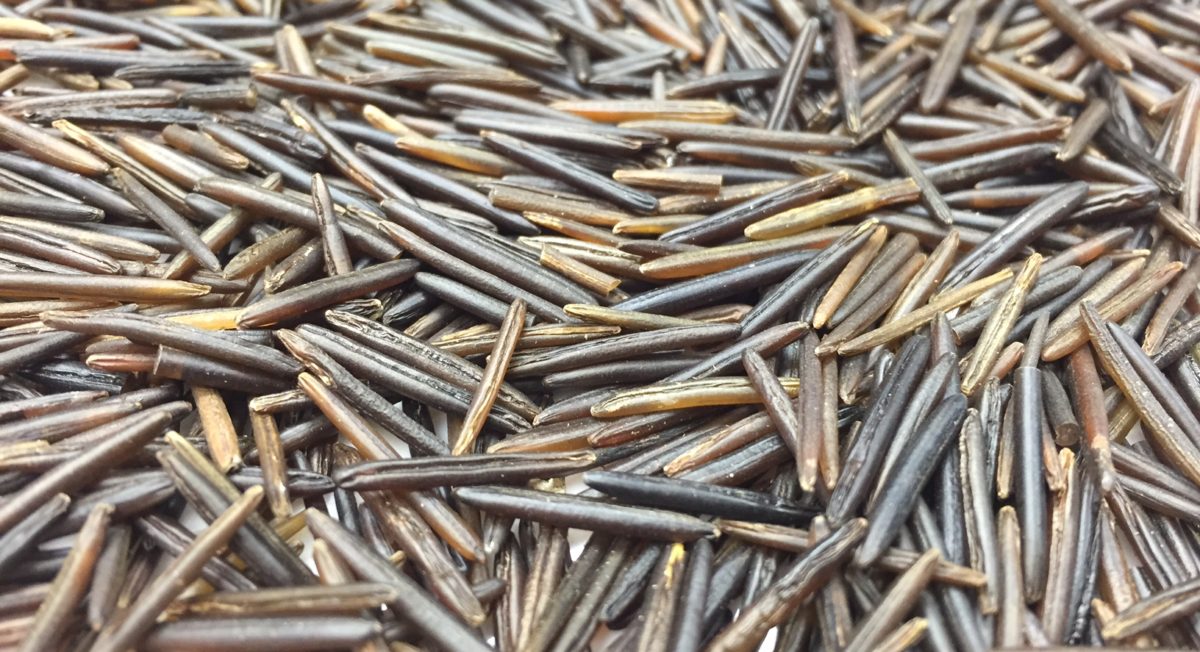Did you know that wild rice is not considered to be in the rice or grain family? It is considered a seed. More specifically a water-grass seed known as zizania aquatic. This North American native grain can be used in many different applications, like beer, salads, soups, stir fry’s and even desserts. It is a product that we as Manitobans can proudly call homegrown.
Manitoba averages about 25 per cent of Canada’s total wild rice production, annually. Our clean lakes, streams and rivers make our province ideal for growing this unique product naturally, as opposed to cultivated or paddy-grown wild rice, which is how it is typically grown in other areas. Most wild rice production in Manitoba takes place east of Lake Winnipeg around the Whiteshell area and northwest around Flin Flon and The Pas.
The process of growing wild rice is very fascinating as it is grown in water rather than a regular field: farmers start with the water specifications. It must be clear and not muddy while steadily moving to avoid algae and bacteria growth. The water levels can vary from field to field with a range of six inches to four feet. If the water is too deep the sunlight cannot reach the seeds. The level of water must stay consistent in each field through June, July and August, as a rise or drop in the water levels can affect the stalk, making it weak or flooding the plants causing them to collapse and die. The soil at the bottom of the water needs to be soft and mucky with a depth of at least 18 inches.
The wild rice seed from last years’ crops lay at the bottom of the water bed dormant until spring. Farmers may add more seed by simply dropping the prepared wild rice seed into the water by boat or throwing it from shore. The seeds settle to the bottom and germination begins. The rays of sunlight in the spring hit the water creating the perfect conditions for the plants to begin to grow. Early growth begins in late May to early June.
As the plants reach the surface of the water it looks like floating grass. When the plants begin to peak out of the water they look similar to a green wheat field. The plants grow tall and strong through the summer months and light green kernels begin to develop at the top of the plant in early August. The kernels will begin to ripen and turn a dark green or a light brownish color by the end of August and into the first three weeks of September.
Harvest can be done in a few different ways, most common is the traditional way from hundreds of years ago. Two harvesters head out in a canoe with nothing more than a simple pole to steer the boat and two wooden sticks used to tap the plants. As they make their way through the rice field, the person in the back of the canoe grabs the rice plants with their two sticks and taps them so the ripened rice kernels fall into the boat. This process is repeated many times over a two-week period. As the rice is harvested into the canoe, many seeds fall into the water, thus planting has begun for next year’s harvest.
When the rice is taken off the plants, it contains 40 to 60 per cent water. The wild rice must undergo two very important steps before being shipped for consumption. It is put through a curing process, which allows the immature rice to ripen and the hull of the kernel to fall away. This is where the rice starts to get it dark brownish-black colour. It is then put through a parching process, where the rice is dried out and will contain only 6 to 8 per cent water content. This process kills any bacteria that may be present. The wild rice is now ready to be packaged and shipped to the consumer.
Wild rice is highly nutritious with it containing twice as much protein as white rice and more vitamin B, iron, calcium and phosphorous than brown rice. It is cholesterol free, contains no sodium and is considered gluten-free. Its nutty, deep flavour makes it easy to create flavourful dishes with only a few ingredients. It is almost fail-proof for those whole struggle to cook grains as it is extremely tough to overcook.
This product is unique, has great texture and flavour, and most importantly is produced locally. I have a new appreciation for all the work and many variables that go into the delicious product. Without a doubt, the next time I use wild rice, I will remember the time, labour and passion that went into producing it.
***
Melissa Hryb is the chef at Marion Street Eatery, where she specializes in hearty comfort food with a twist.
Follow her on Twitter @MarionStreetEat or Instagram @MarionStreetEatery
